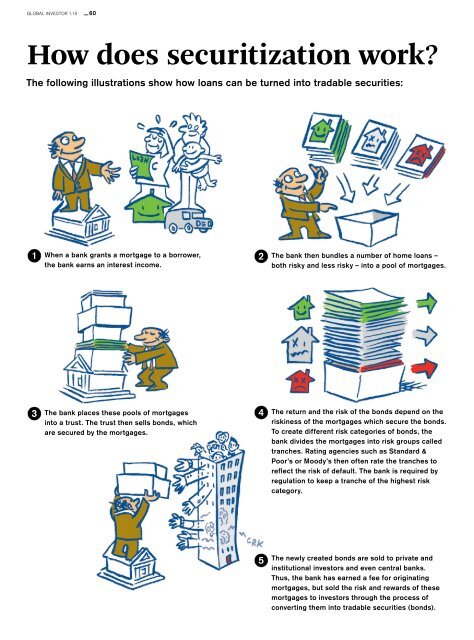Illiquid assets
Unwrapping alternative returns Global Investor, 01/2015 Credit Suisse
Unwrapping alternative returns
Global Investor, 01/2015
Credit Suisse
Create successful ePaper yourself
Turn your PDF publications into a flip-book with our unique Google optimized e-Paper software.
GLOBAL INVESTOR 1.15 — 60 The bank then bundles a number of home loans –<br />
How does securitization work?<br />
The following illustrations show how loans can be turned into tradable securities:<br />
1<br />
When a bank grants a mortgage to a borrower,<br />
the bank earns an interest income.<br />
2<br />
both risky and less risky – into a pool of mortgages.<br />
3<br />
The bank places these pools of mortgages<br />
into a trust. The trust then sells bonds, which<br />
are secured by the mortgages.<br />
4<br />
The return and the risk of the bonds depend on the<br />
riskiness of the mortgages which secure the bonds.<br />
To create different risk categories of bonds, the<br />
bank divides the mortgages into risk groups called<br />
tranches. Rating agencies such as Standard &<br />
Poor’s or Moody’s then often rate the tranches to<br />
reflect the risk of default. The bank is required by<br />
regulation to keep a tranche of the highest risk<br />
category.<br />
5<br />
The newly created bonds are sold to private and<br />
institutional investors and even central banks.<br />
Thus, the bank has earned a fee for originating<br />
mortgages, but sold the risk and rewards of these<br />
mortgages to investors through the process of<br />
converting them into tradable securities (bonds).

















